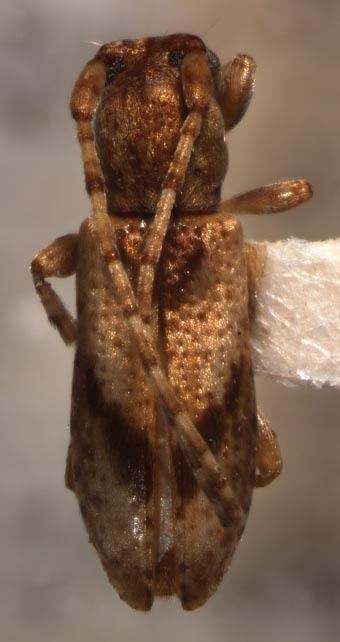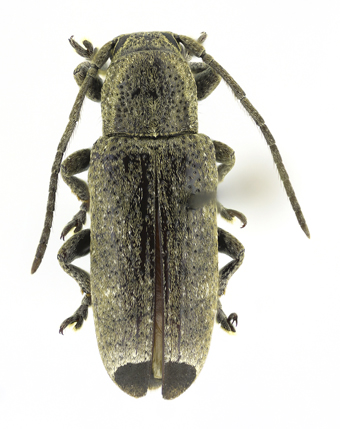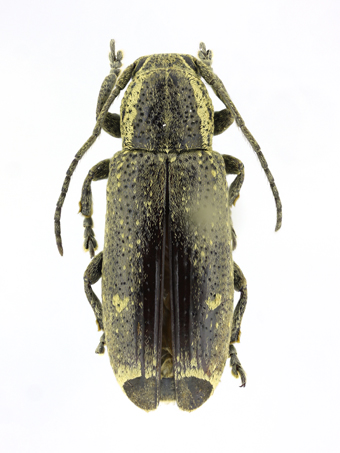|
Apomecynini Classification
Selected References to Larvae Specimens
|
 Acrepidopterum jamaicensis Fisher, 1942; dorsal holotype specimen Cerambycidae:Lamiinae:Apomecynini Photograph © S.W. Lingafelter  Adetus analis (Haldeman, 1847); dorsal Cerambycidae:Lamiinae:Apomecynini Photograph © A.M. Hodson  Adetus cacapira Martins & Galileo, 2005; dorsal Cerambycidae:Lamiinae:Apomecynini Photograph © A.M. Hodson All Apomecynini exemplar species images |

